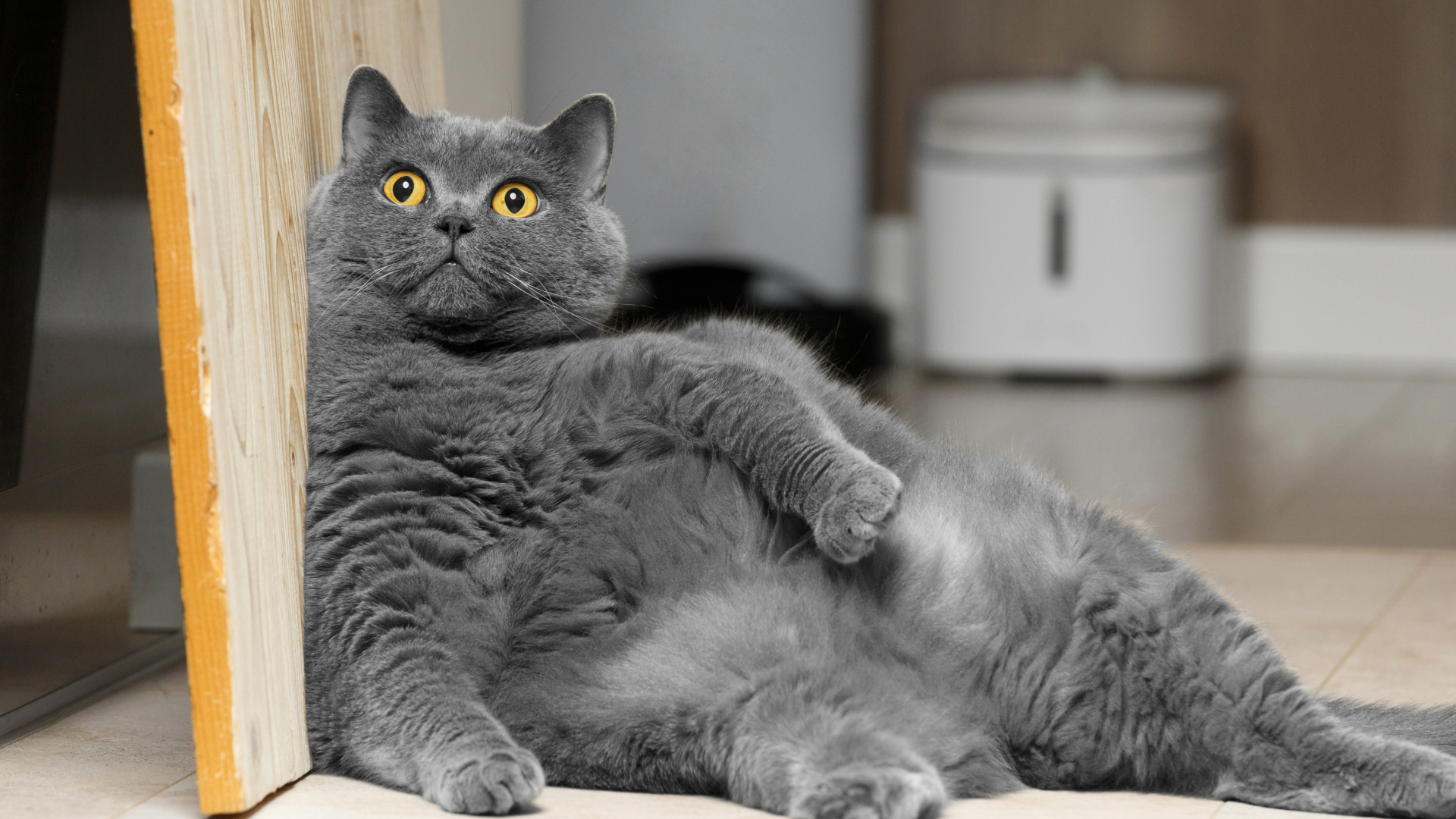32 types of birds you might see in your backyard
No matter where you’re living in the US, these are the types of birds you might see in your backyard.

Feathered friends bring many benefits to our outdoor space, but the types of birds you might see in your backyard will depend on where you live.
For example, perhaps you live in North America, in which case, you might see a Red-winged Blackbird on a daily basis. If you’re in South America, it wouldn’t be unusual to see an Andean Condor in your outdoor space, which is the largest bird of prey in the world.
Of course, knowing how to attract birds into your garden will come in handy. That’s because these flying creatures are more likely to visit your garden if there’s some of the best bird food available. Many are also more inclined to visit if there are cover and nesting spots available.
So, whether you’re living in California, Colorado, Michigan, or Minnesota, we’ve done the research to get to the bottom of the types of birds you might see in your garden.
Types of birds you might see in your garden
1. Ruby-Throated Hummingbird
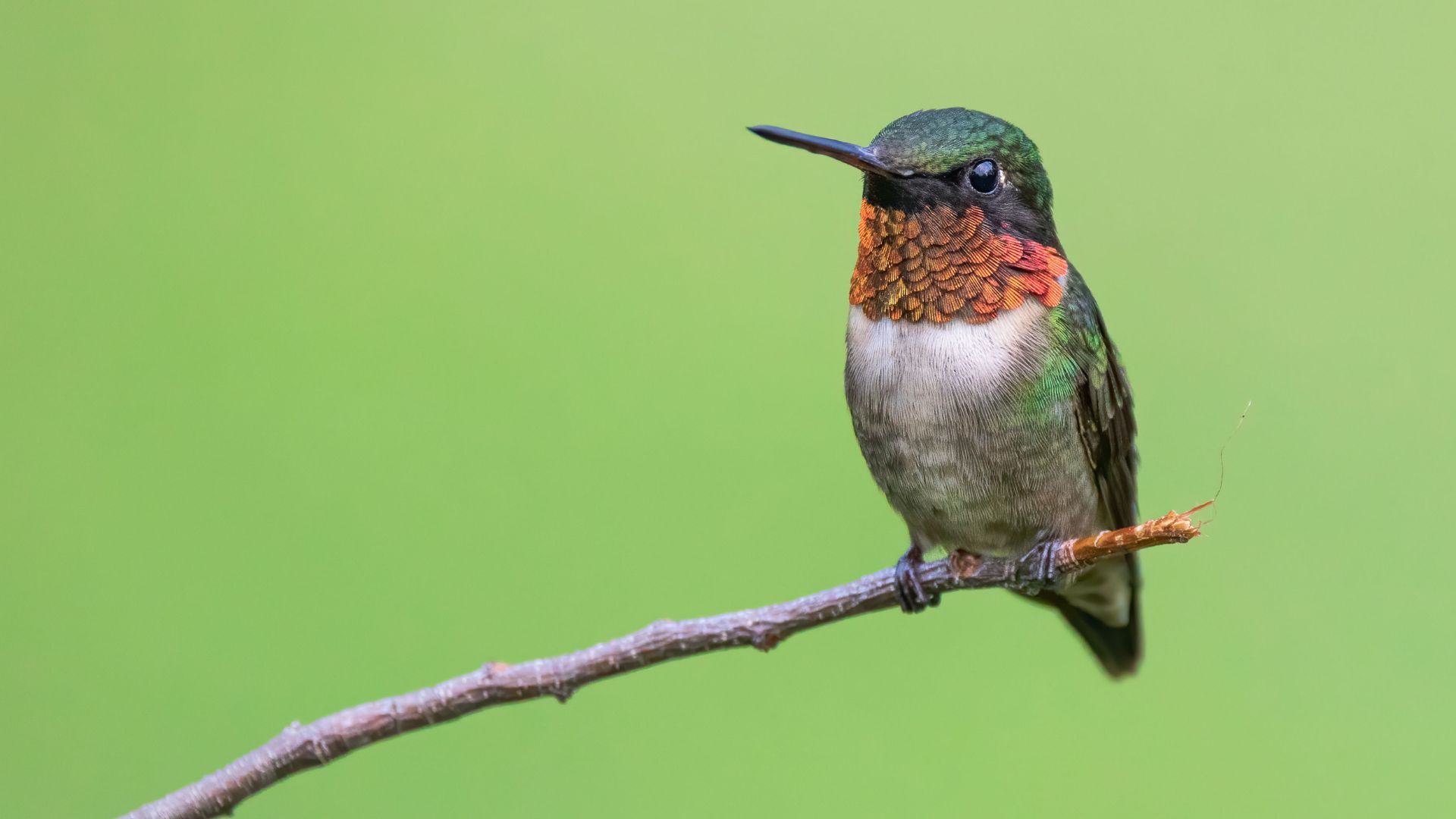
Just look at this little beauty! The Ruby-Throated Hummingbird can be spotted in the eastern US states, like Florida, Alabama, and Georgia, during the summers, and come fall, they’ll migrate to Central America in their pursuit of warmer temperatures.
But you'd have to be quick to see them! These speedy creatures can beat their wings more than 50 times a second and they’re known (and loved) for their mouselike squeaks.
2. Carolina Wren
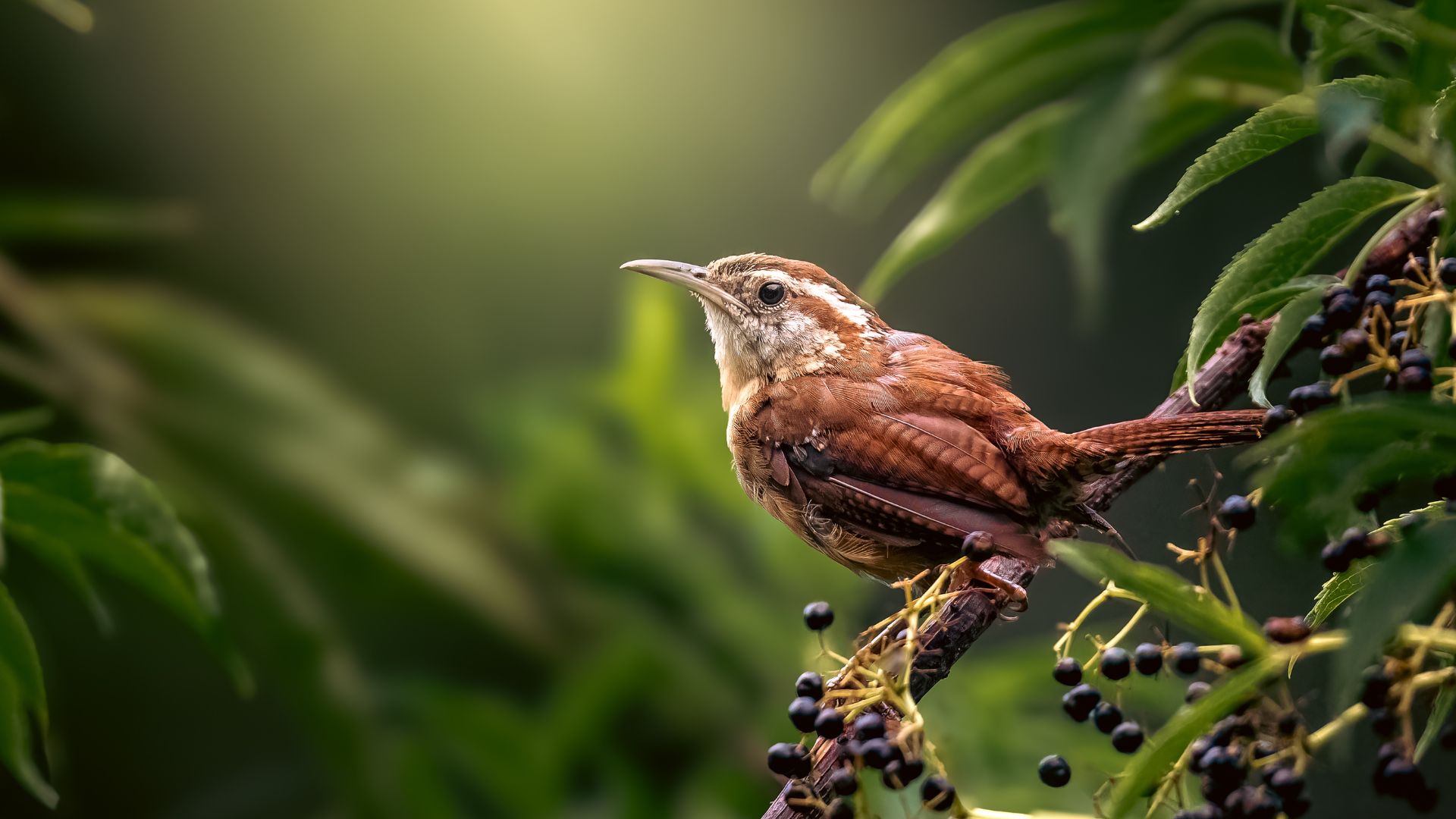
As its name gives away, Carolina Wrens can be found in Carolina, along with other southeastern states, like Georgia and Kentucky. These small but chunky birds are characterized by their round body, long tails, and warm orange undersides. When they’re not eating insects and spiders, they’re singing bird songs. As long as you provide water, fill up one of the best bird feeders, and have shelter in your backyard, you’ll probably spot these charmers amongst ivy or other dense vegetation.
PetsRadar Newsletter
Get the best advice, tips and top tech for your beloved Pets
3. Black-billed Magpie

Also known as the American Magpie, this frequent flier is found in the western half of North America from Michigan and Texas to California and Alaska. You’ll often spot these noisy yet majestic creatures perching on road signs, flying across rangelands, or sitting on fence posts just watching the world go by. However, Black-billed Magpies are partial to foraging on the ground and will occasionally visit suet feeders or bird feeders. So you could always learn how to make bird suet to help you attract more flying friends into your garden.
4. Rufous Hummingbird
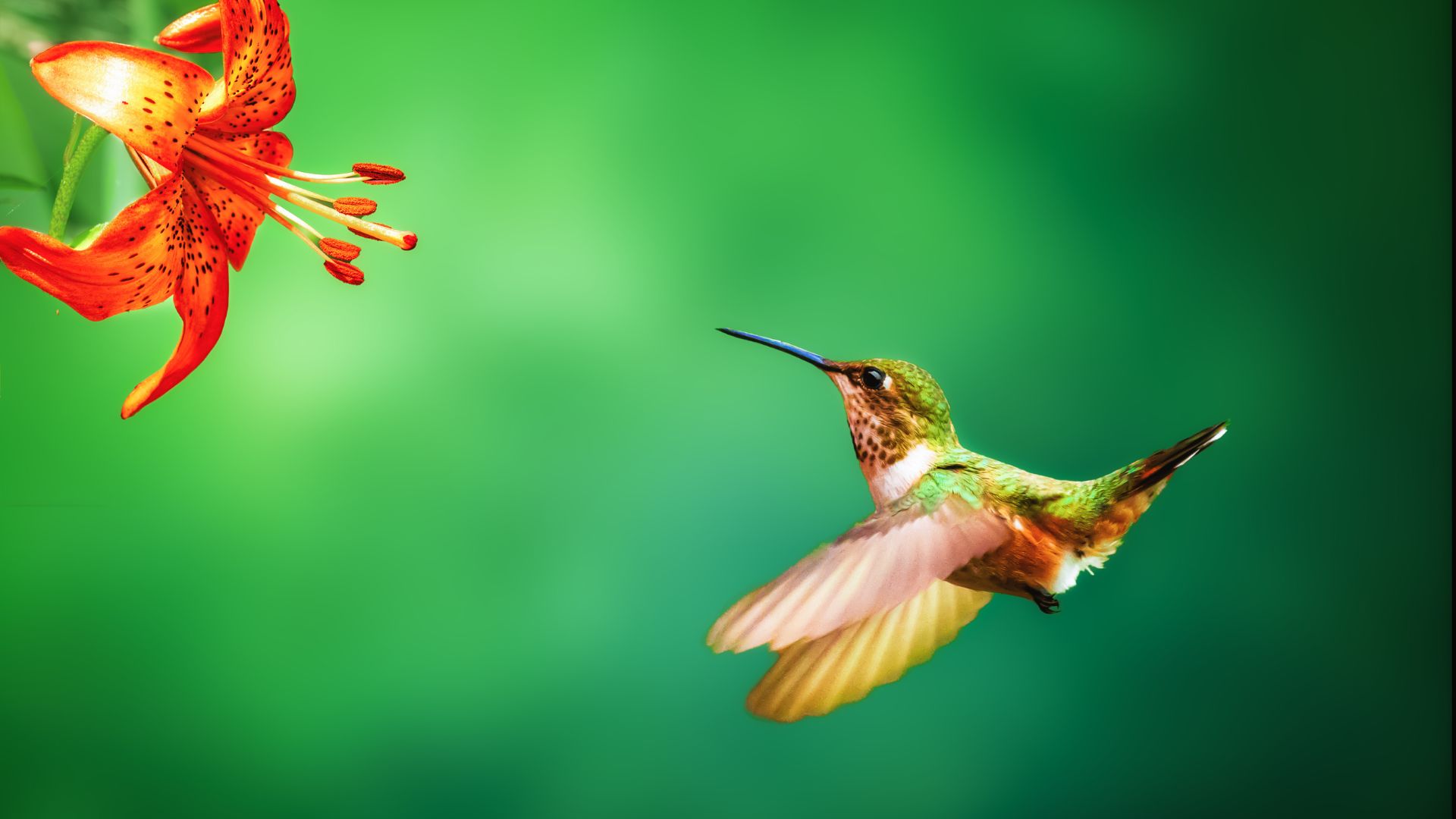
Small in size, the Rufous Hummingbird nests further north than any other Hummingbird, as this little beauty has been spotted all the way up to south-central Alaska. This feathered baby grows up to 9cm in size and male Rufous Hummingbirds are set apart by their dark red-colored throat, while females are known for their green backs and spotted throat. In the wild, they'll feed on nectar from flowers along with spiders and insects.
5. American Robin
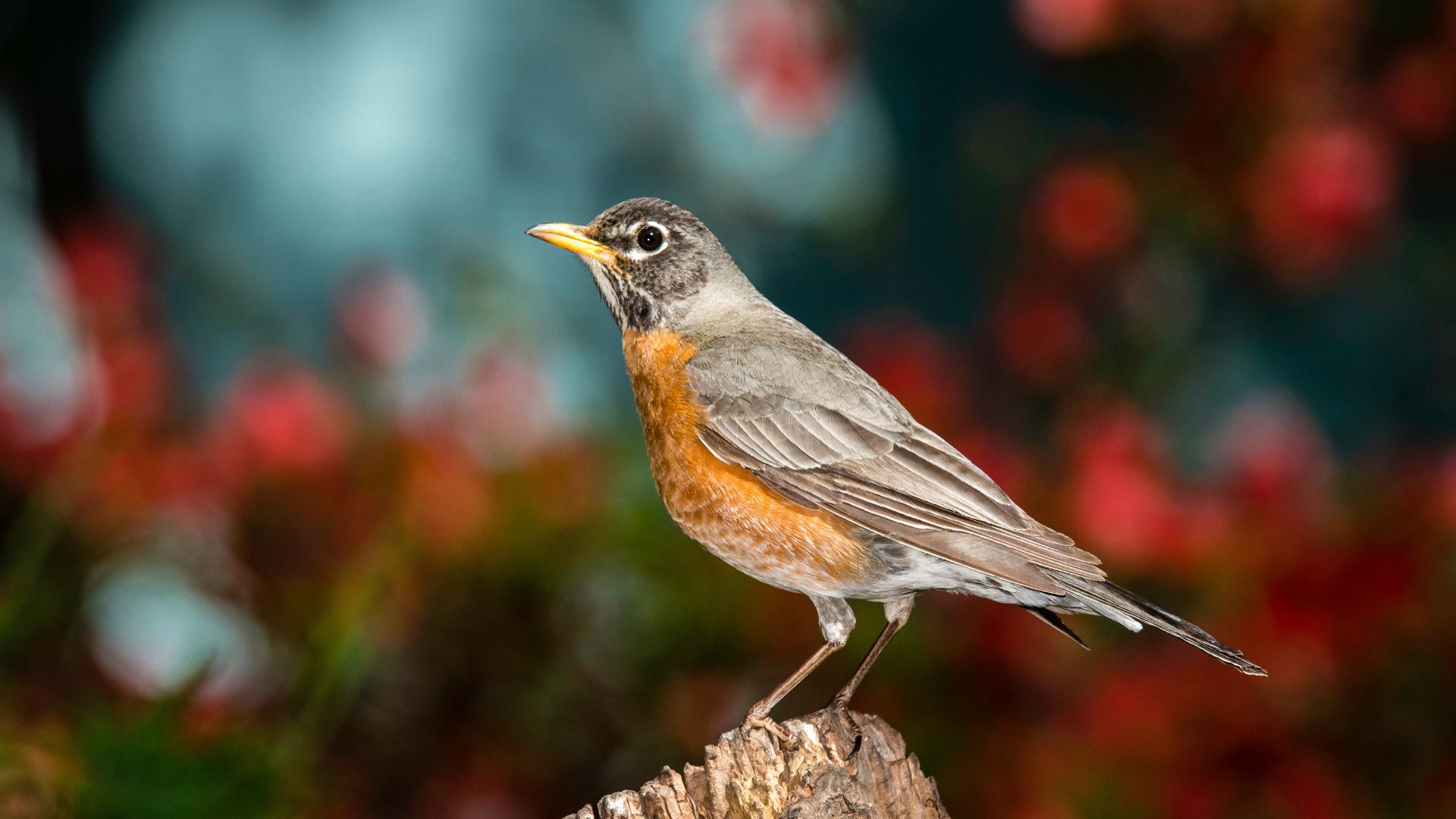
Feeding on insects and nesting in trees, these red-breasted beauties are commonly spotted in parks, grasslands, and suburban backyards almost anywhere south of Canada. Of course, they are partial to nuts and seeds. But they're more inclined to tuck into earthworms they’ve foraged for on the ground.
6. House Sparrow

Whether it’s a city, town, or farm, House Sparrows are found in every state in the United States, except Alaska and far northern Canada. These noisy and sociable birds are keen on not wasting food. So much so, that they’re often found scavenging through rubbish.
7. American Goldfinch

Residing in North America, this bright and beautiful highlighter yellow bird changes hues from season to season. In spring and early summer, adult males are bright yellow, while females are a duller yellow. During the winter, these birds look brown rather than golden and you’ll spot the active little finches clinging to weeds or filling up their stomachs at a bird feeder.
8. Mourning Dove
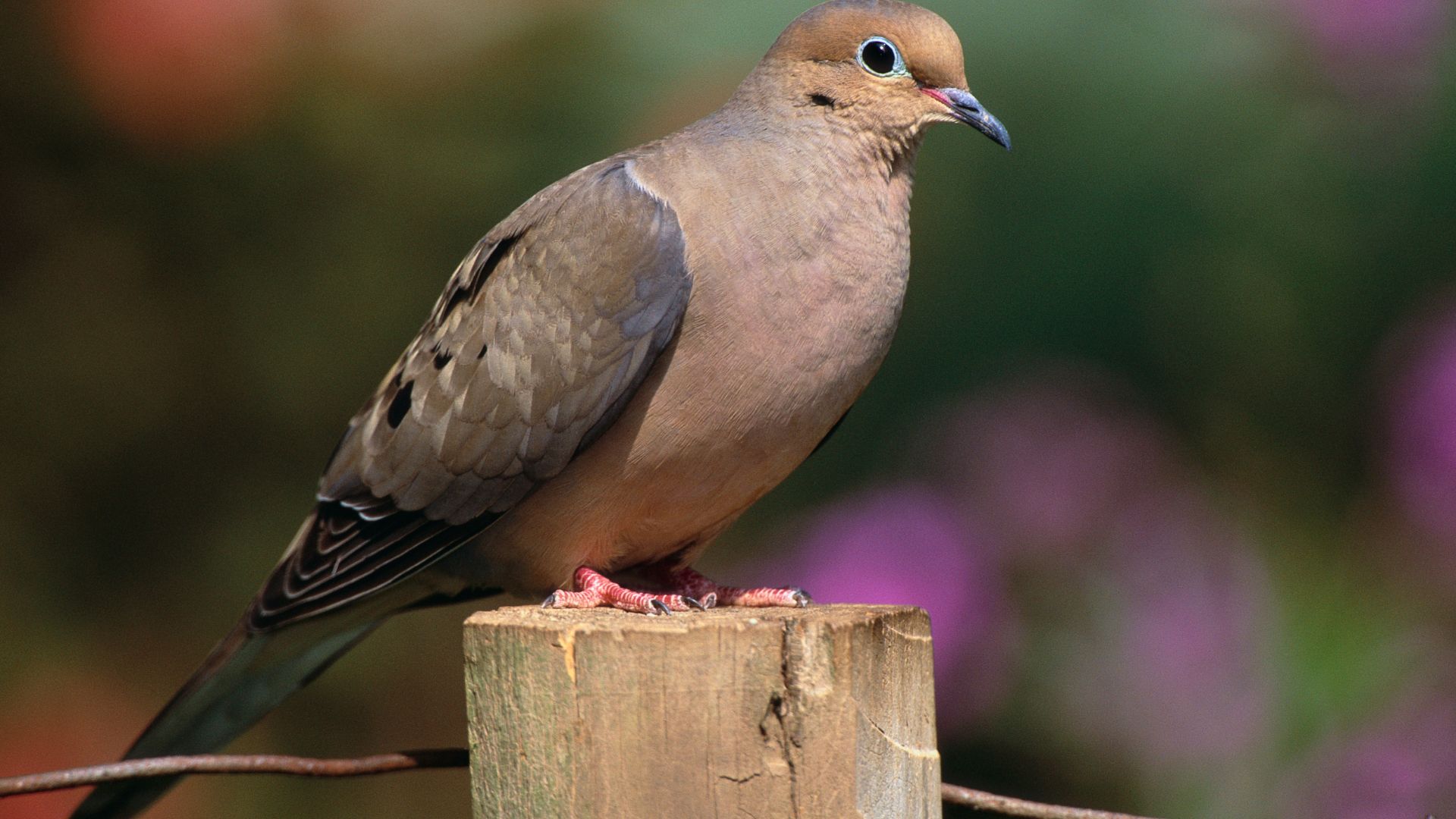
Perhaps one of the most common birds heard and spotted across North America, Mourning Doves are often sighted near humans. Whether it’s in backyards by the bird feeder, perching on a fence, or walking on the ground scavenging for anything tasty.
9. White-breasted Nuthatch

Living in pairs all year round, you’ll spot these birds in woody areas across North America with places like southern Canada and southern Mexico being hot spots. These small flying friends forage up, down, and sideways over trees and will chip away at wood to find food.
10. Steller’s Jay
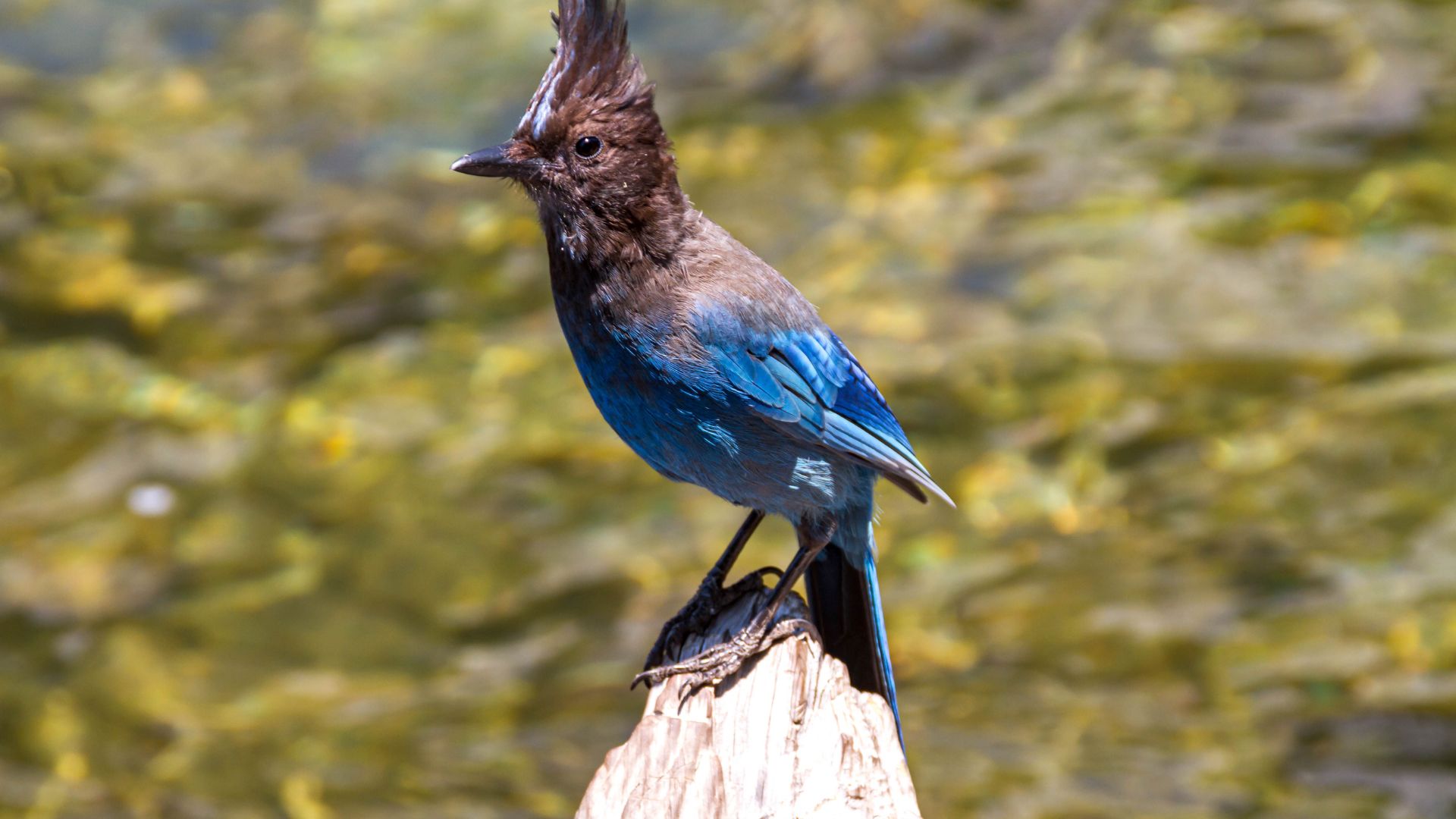
Often found on the West Coast, these large dark jays love mountainous regions with thick evergreen canopies. Steller’s Jays can be tempted to leave their woody regions though for picnic tables, campgrounds, and bird feeders if they’re filled to the brim full of food.
11. Spotted Towhee
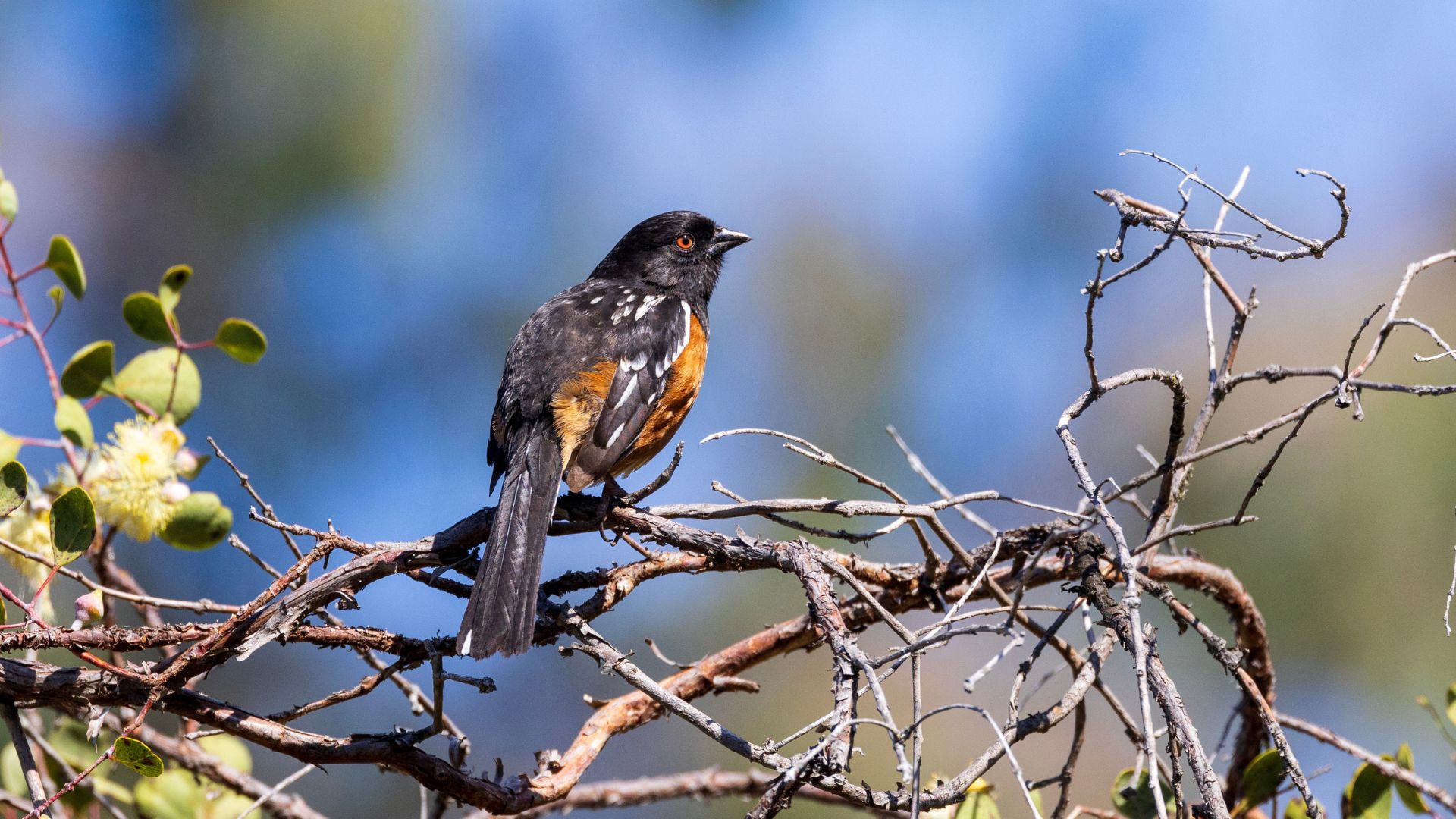
If you live in western North America, chances are you’ve spotted these large sparrows at one point or another. Spotted Towhees like to visit or live in backyards, especially if you’ve got shrubby spaces or overgrown hedges. But instead of eating from a bird feeder, they’d prefer to pick at their seeds from the ground.
12. Downy woodpecker
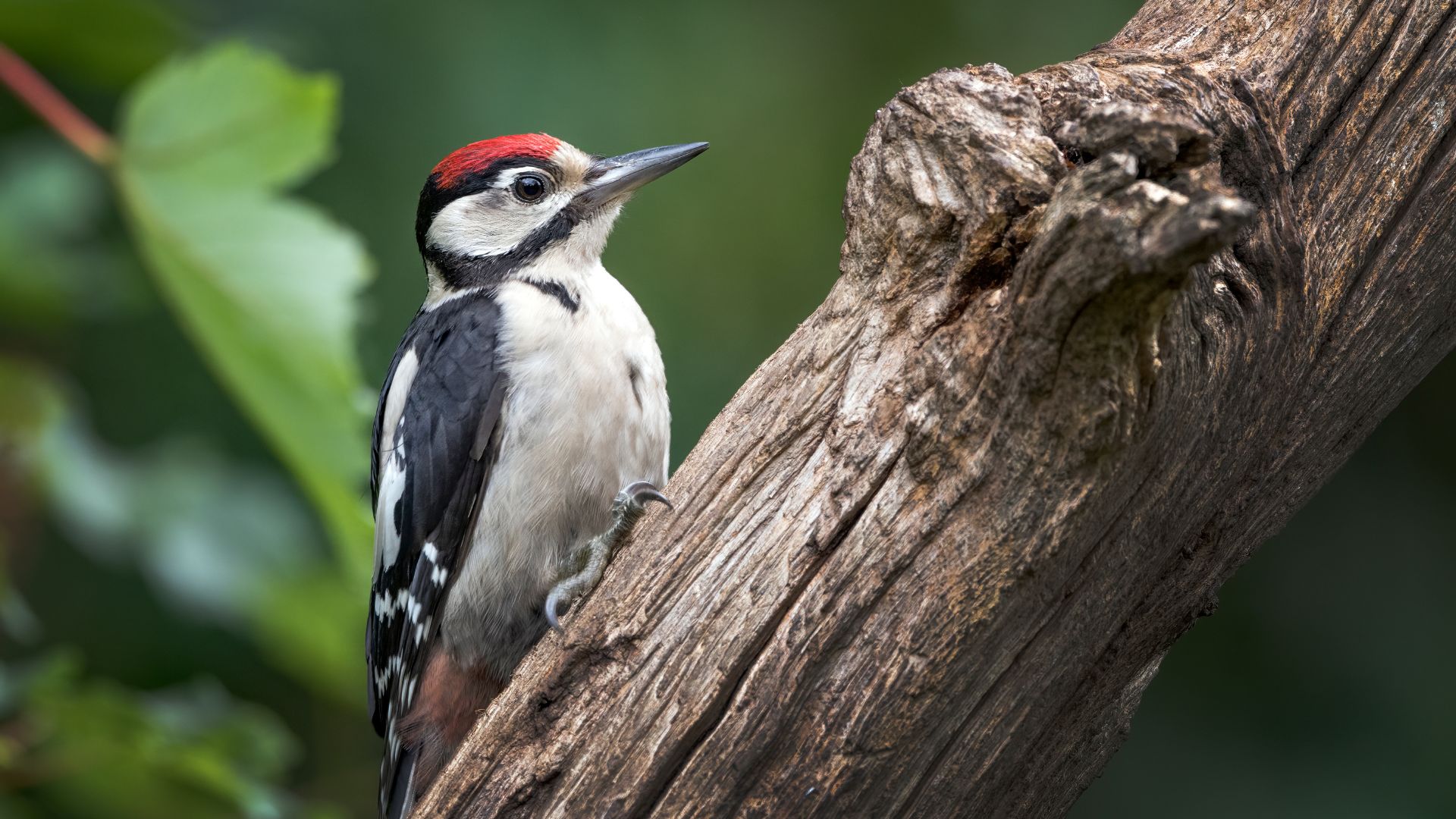
Fascinating to look at, a Downy Woodpecker has a checkered black and white print with males having a small red patch on the back of their head. Downys are found in most of North America and hold the title of being the smallest and most common American woodpecker. If you’ve got loads of insects in your gardens, these flying friends will feel right at home as they love dining on beetles, ants, caterpillars, and wasps.
13. Tufted Titmouse
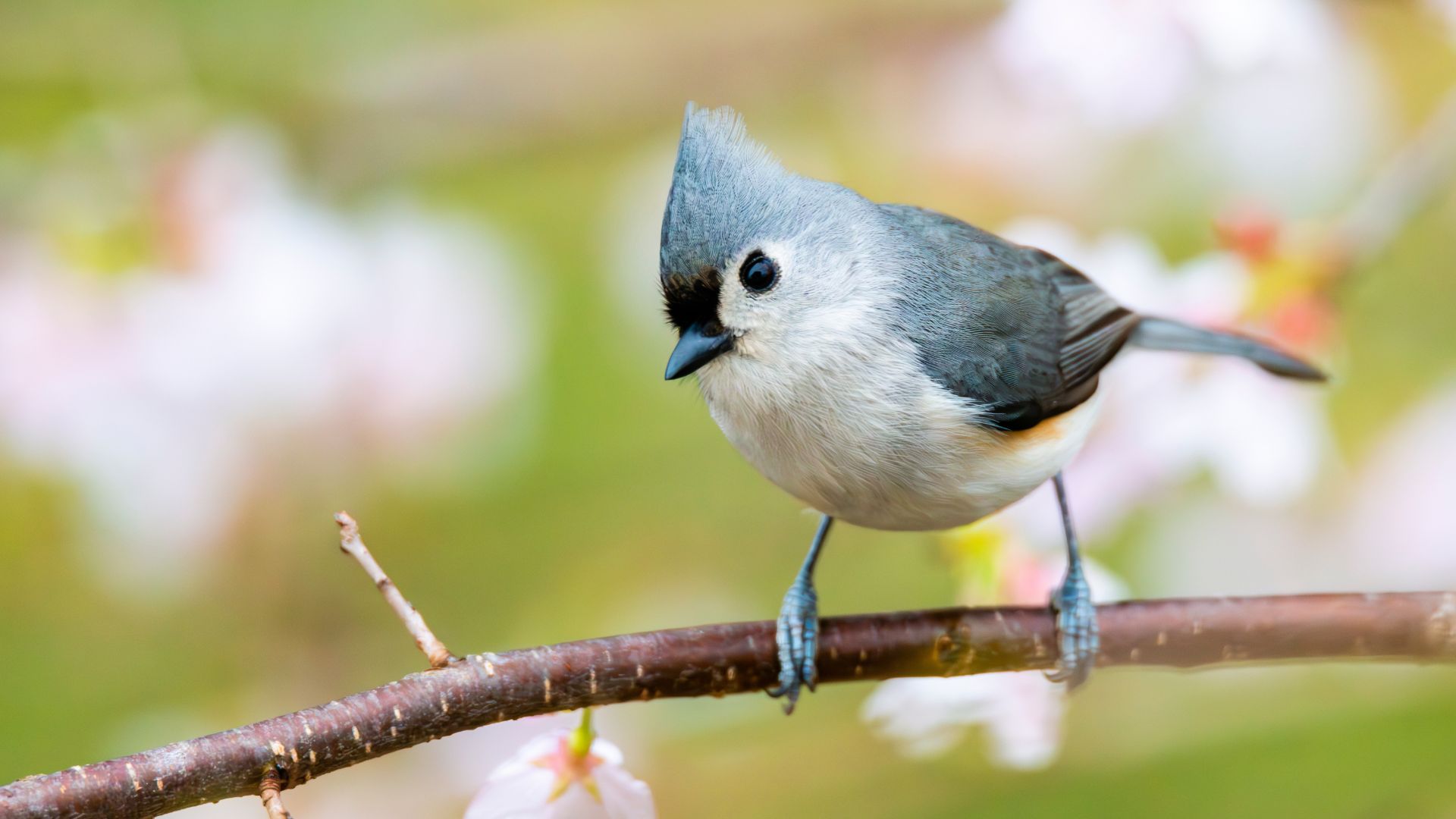
Once only native to the Ohio and Mississippi River basins, the beautifully created Tufted Titmouse is now often sighted in Quebec and Ontario in Canada. A frequent visitor to feeders, these hoarders will stash seeds in tree cracks so they can still feast in winter.
14. Northern Cardinal
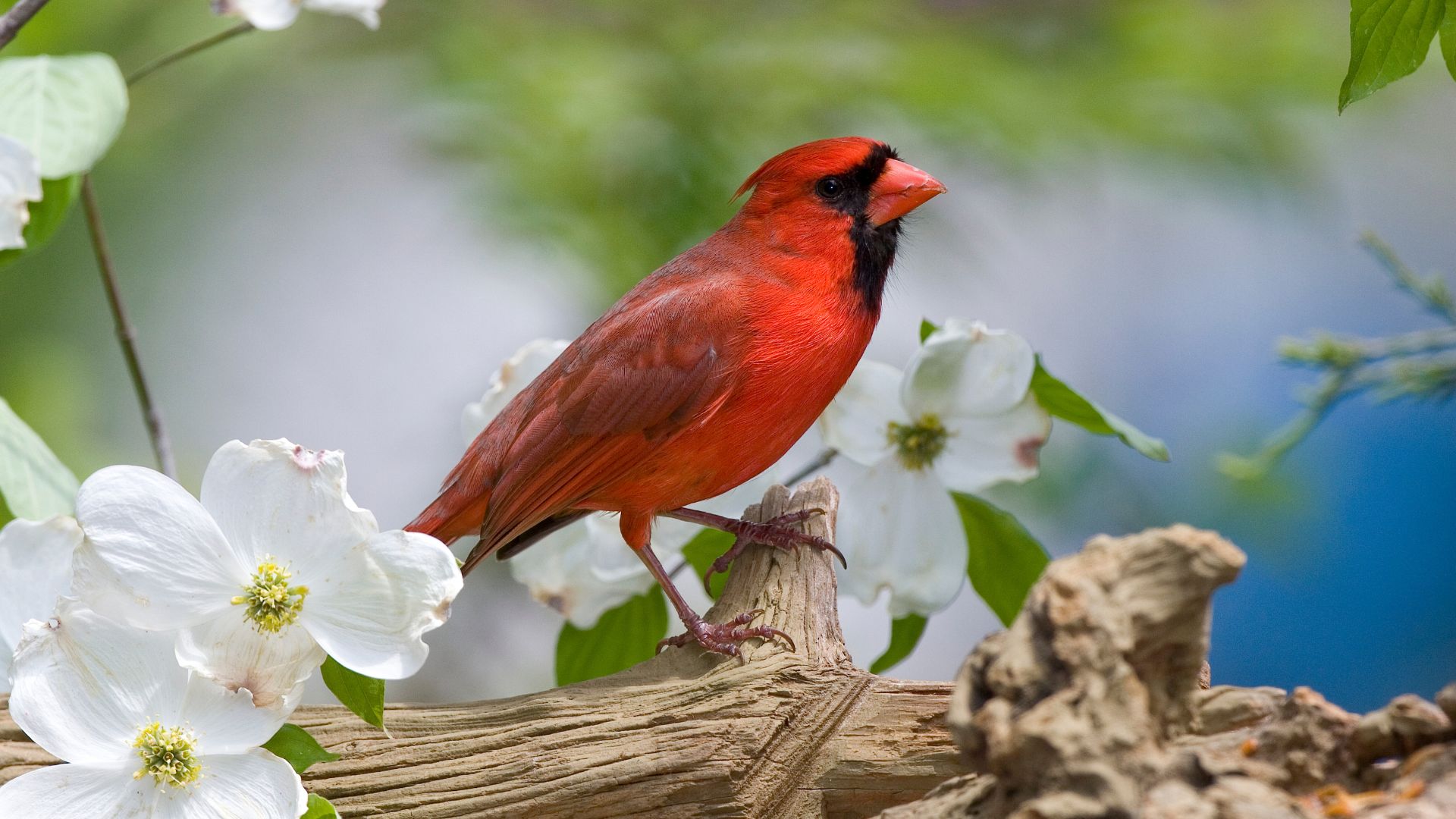
Perhaps one of the most beautiful and interesting of birds to look at, these bright beauties are red from head to toe with just a sprinkling of black around their eyes and beak. So, it’s fair to say that this mid-sized songbird is known for its red plumage but also for its love of red fruits, like berries and mulberries.
15. Blue Jay
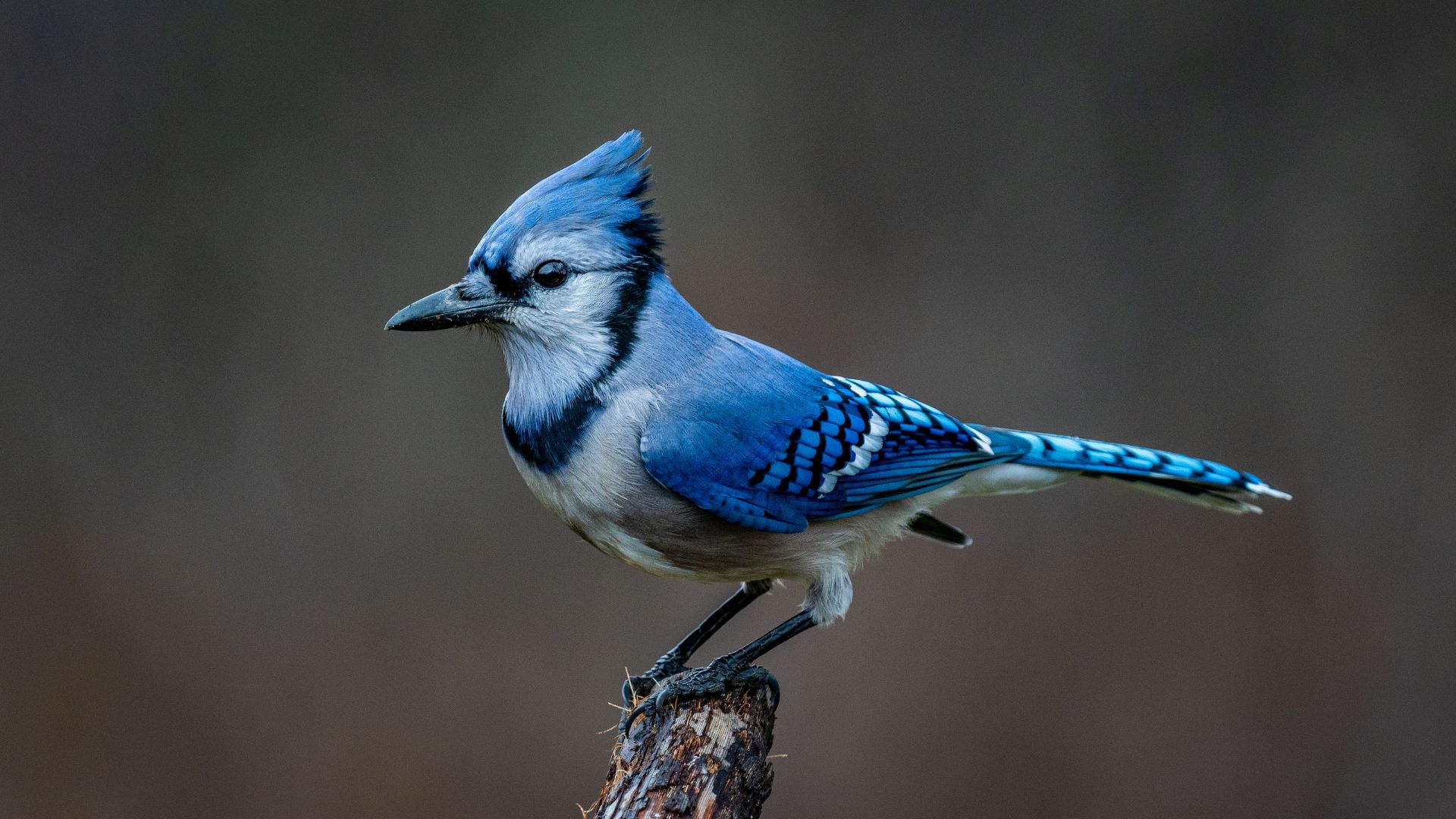
Traveling in pairs, Blue Jays live in eastern and central North America in forests and residential areas where they spend their days feeding from bird baths or devouring peanuts, sunflower seeds, and suet.
16. Black-capped Chickadee

Easily identifiable thanks to their black cap-like markings, Black-capped Chickadees are one of the most studied and frequent songbirds to feeders and backyards in North America. These chatty creatures will hop from branch to branch and can even hang upside down in their plight to find food.
17. Common Grackle

Found on suburban lawns across North America, this common blackbird will spend its days walking back and forth across the grass to scour for insects including grasshoppers, caterpillars, and beetle grubs. When they’re full, you might spot several of these birds perching on treetops creaking and singing songs.
18. Lesser Goldfinch

The Lesser Goldfinch gets its name because of its gold coloring and for being the smallest of all North American goldfinches. Found in a variety of regions and habitats across the US, these small yellow creatures stick to treetops and weedy fields.
19. Dark-eyed Junco
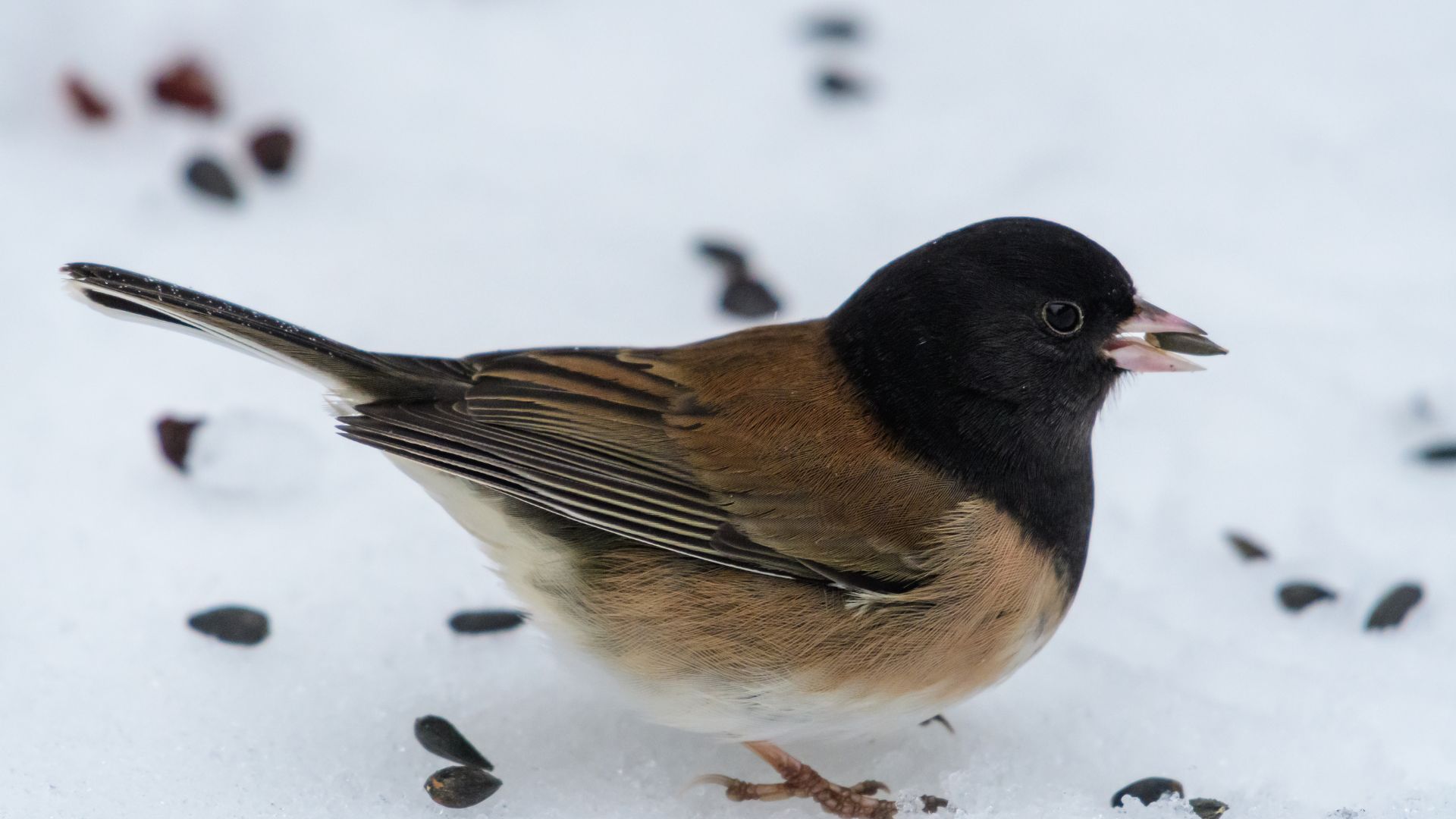
Most likely to be spotted during the winter months, Dark-eyed Juncos are seed-eaters at heart, but they are partial to berries and cracked corn. These neat little sparrows are one of the most common birds in North America — so much so, it’s estimated there are around 630 million of them.
20. Song Sparrow

Sighted throughout most of North America, these intricately colored sparrows when they’re not nesting, foraging or flying, as their name suggests, they’re often singing. Males in particular do this throughout the year to help attract females. Their prey includes insects, seeds, fruits and spiders.
21. Carolina Chickadees
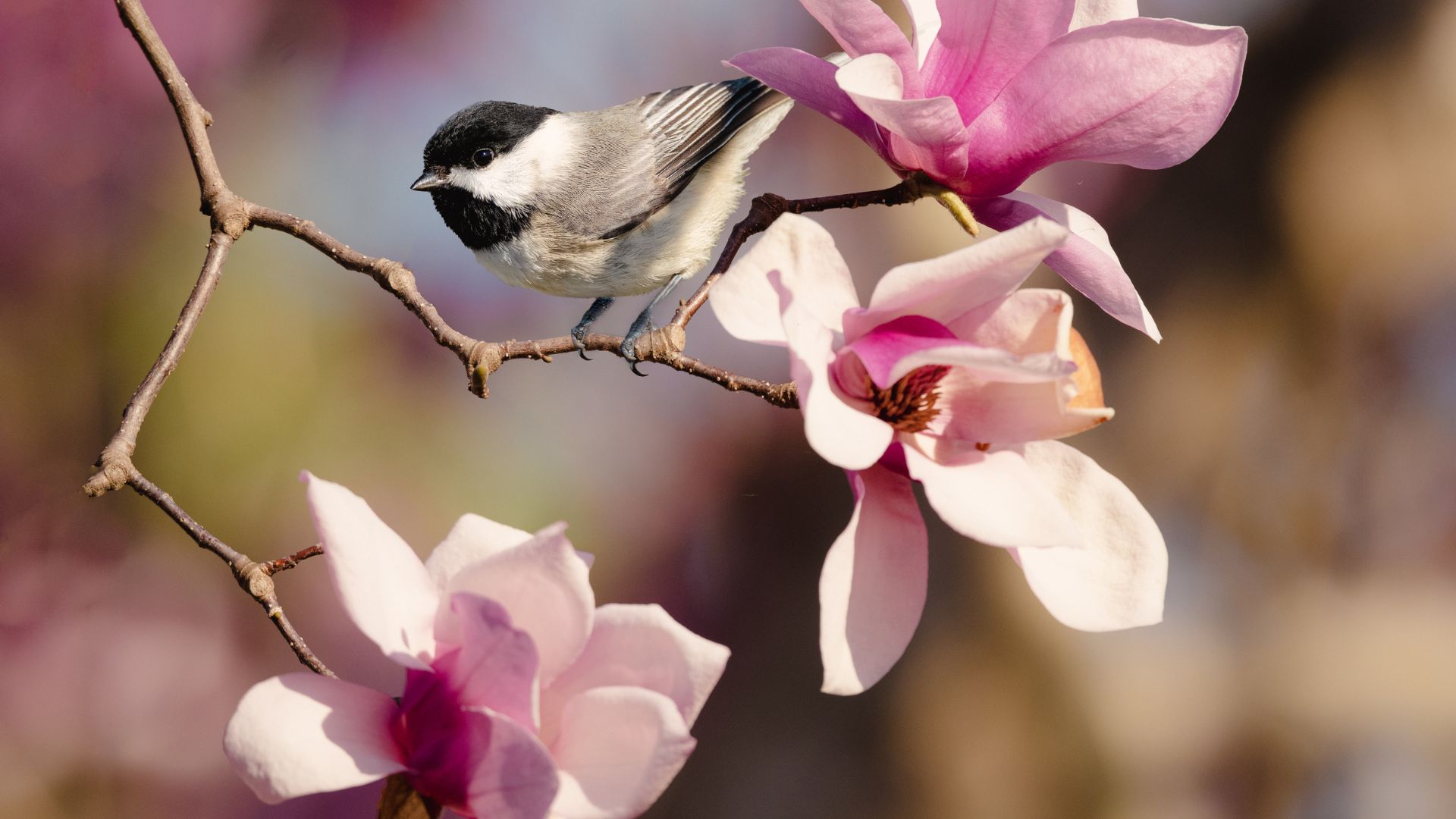
Carolina Chickadees are social birds, sighted across the southeastern states of America. Along with a Mourning Dove and Blue Jay, you might also spot one near a Downy Woodpecker. Often snapped hanging upside down while feeding on insects, these cute little chickadees will make use of bird feeders too.
22. Wood Pigeon
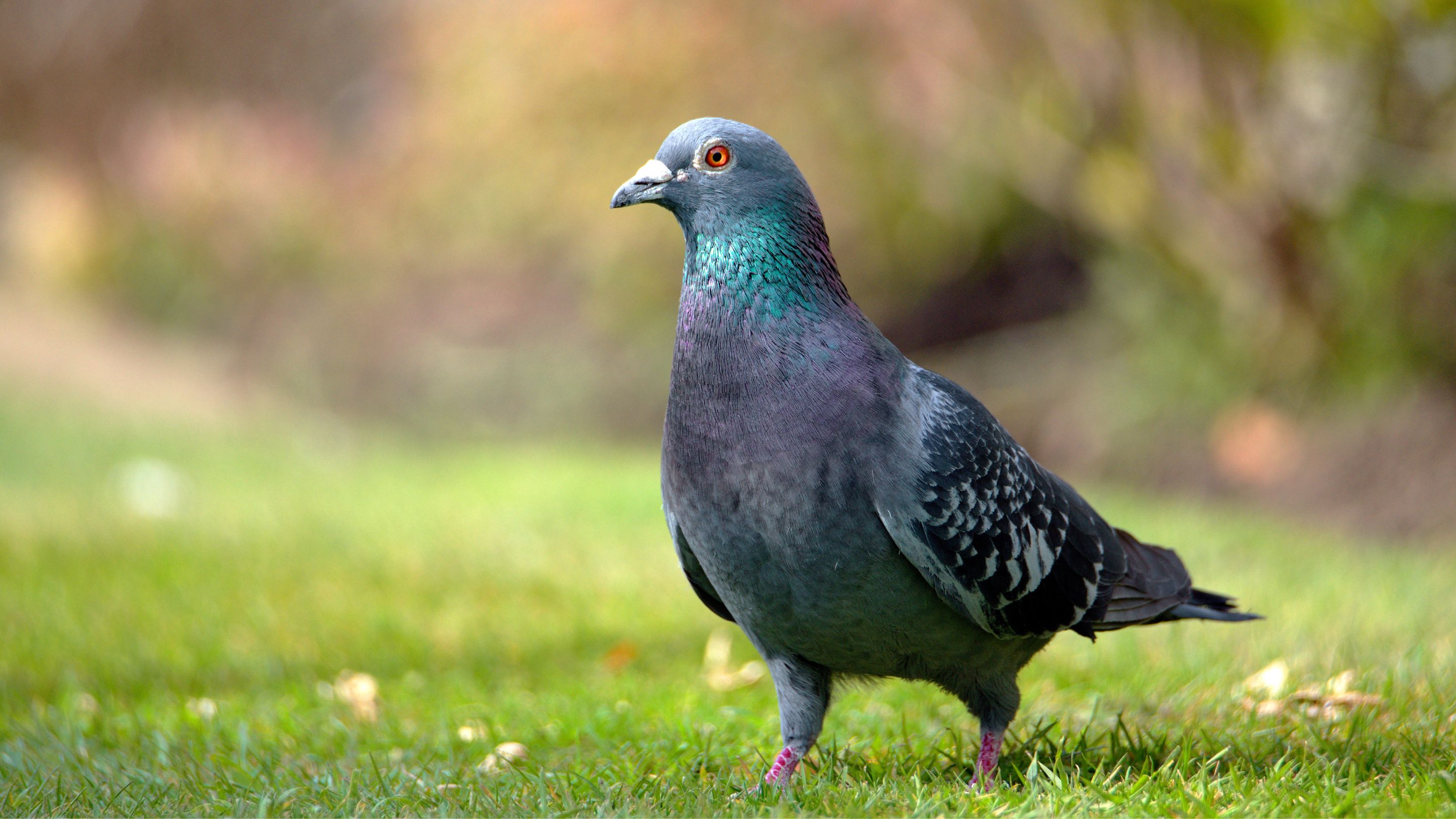
Estimated to be anywhere between 51 - 73 million Wood Pigeons worldwide, if you live in North America, there's a high chance you've spotted this largest pigeon species snacking on just about anything in your garden. Seen in pairs, Wood Pigeons love devouring seeds and nuts, along with shoots and buds.
23. Common Chaffinch
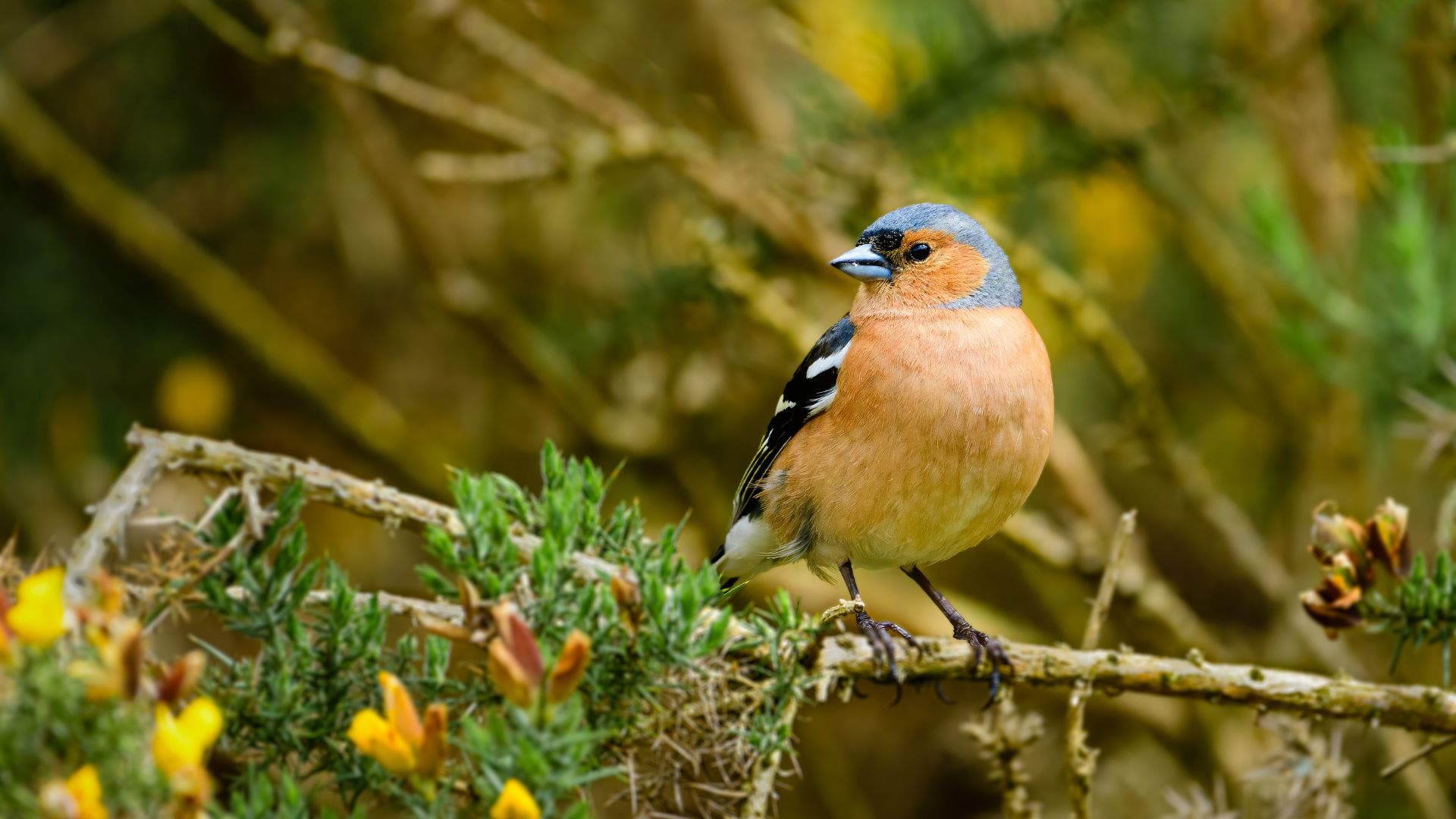
Often referred to as a Bird of the Old World, the Common Chaffinch has been sighted in most of Europe, Africa, Asia, and now Canada and the northeastern United States. Usually spotted on the ground foraging for food, these red-breasted beauties prefer to spend their time in farm fields, orchards, and suburban yards.
24. Northern Mockingbird
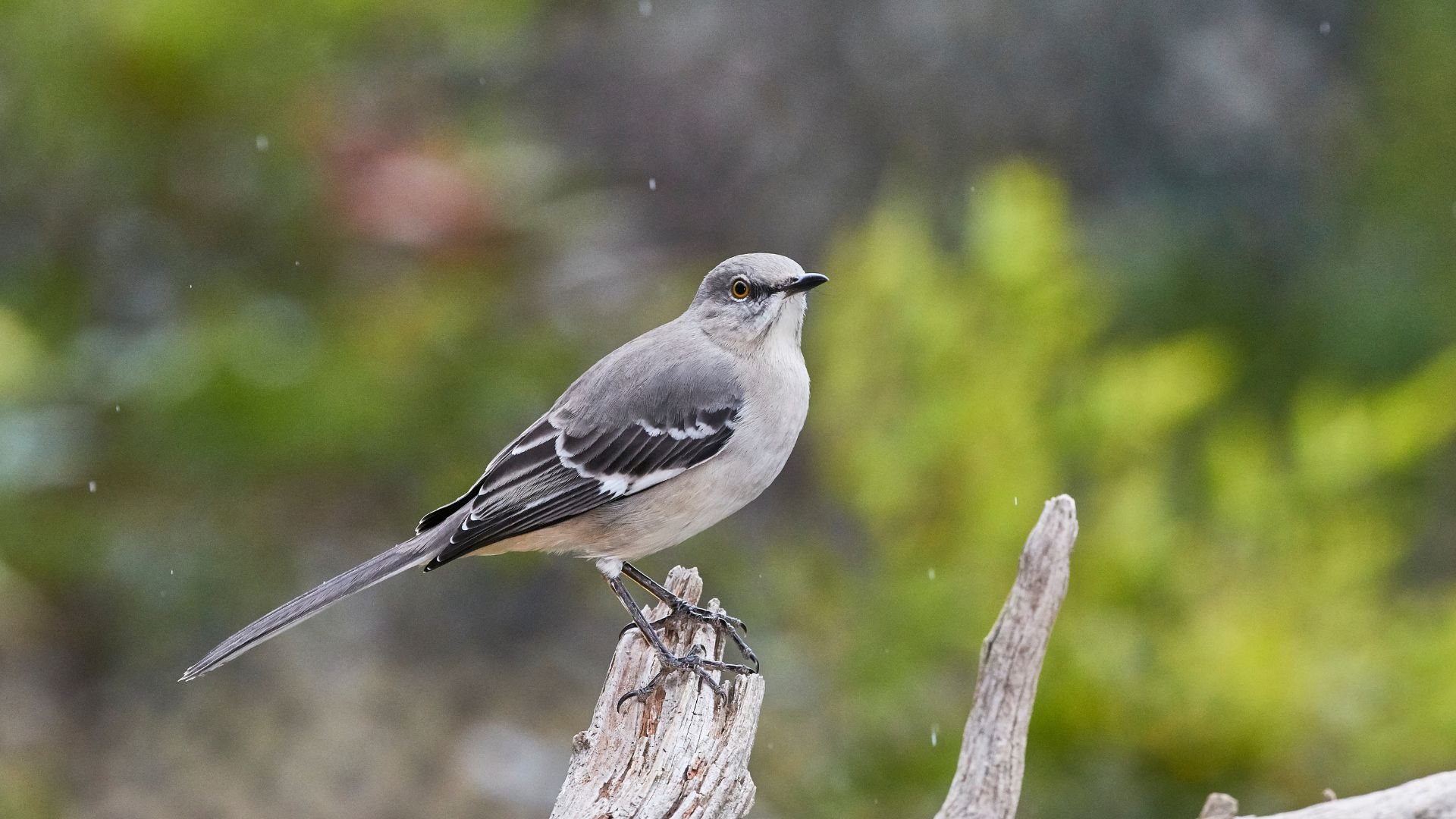
Northern Mockingbirds are found in more than half of all US states, along with Canada. But while they're a keen visitor of suburban backyards, these constantly singing Mockingbirds won't often visit feeders. Instead, they much prefer to devour food from fruiting trees or bushes like hawthorns and blackberry brambles.
25. Eastern Bluebird

Often found in eastern North America and Central America, these beautiful blue birds love spending time around humans. Keen to encourage an Eastern bluebird into your garden? Just know: they prefer flat feeder surfaces but will live off dried mealworms and berries.
26. Pileated woodpecker

Black with white stripes and a red crest, the Pileated Woodpecker is native to the eastern half of the United States and Canada. They’re often found foraging in forest floors, dead trees, or stumps in a bid to find insects they can feast on or fruits and nuts.
27. Chipping Sparrow

Whether it’s golf courses, parks, or in backyards, Chipping Sparrows can be spotted flitting North America foraging for seeds on the ground and any other items they can eat. Living anywhere between 4-7 years, these flying friends have been nicknamed as the 'hair bird' because nests are often woven with long horse hair.
28. Golden Eagles
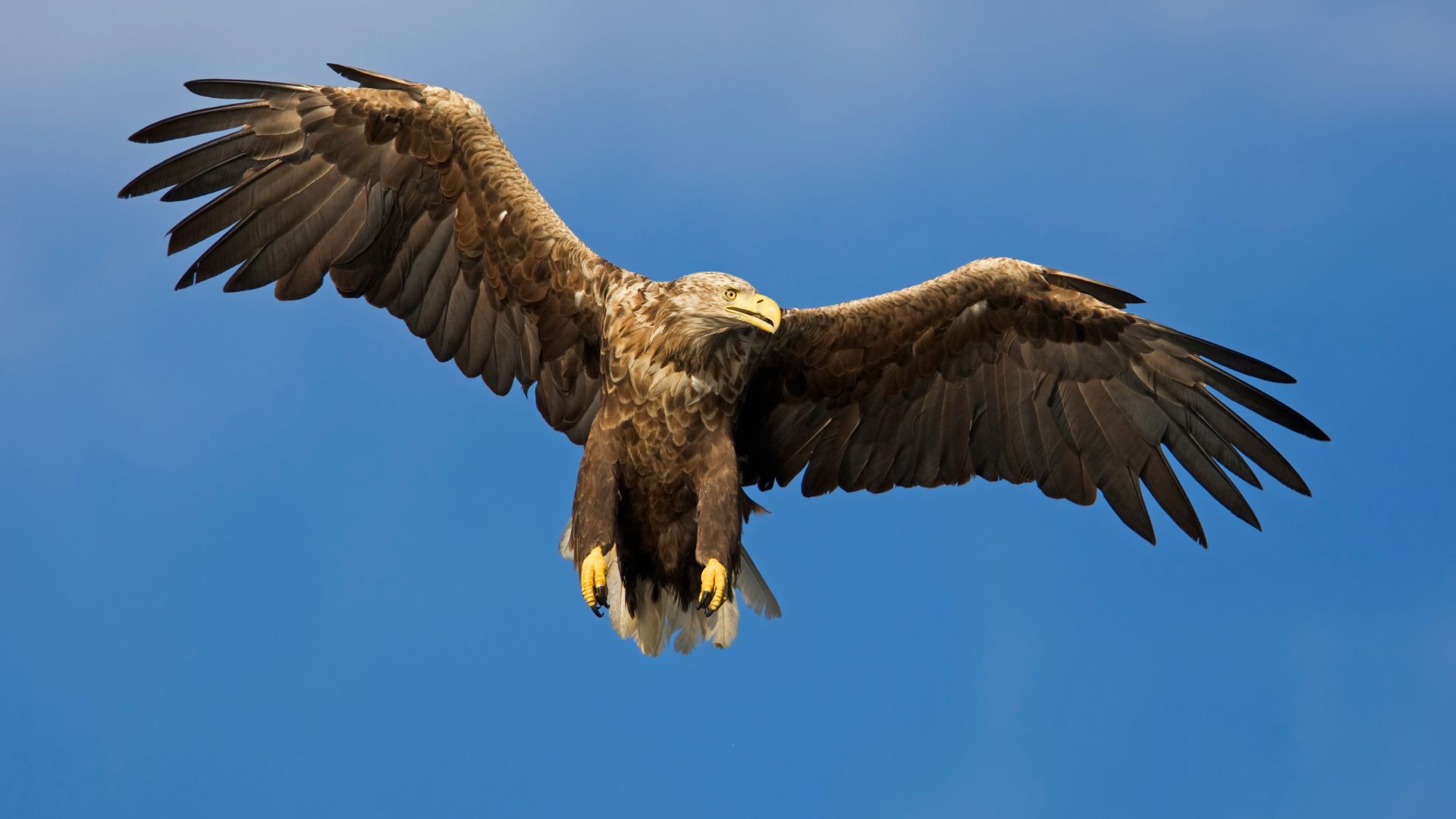
Yes, it really is possible to spot an Eagle in your backyard especially if you live in Alaska and most western states. These fearless hunters can reach up to 200mph and are seen soaring high in the sky while deciding what they’d like to feast on. Sometimes it's mountain birds and hares, other times its snakes and rabbits.
29. American Bald Eagle

You’d be very lucky to spot a Bald Eagle in your backyard. But if you’re in Canada and Alaska, it wouldn’t be beyond belief. Of course, fish is a staple of their diet, but these opportunistic feeders will eat any prey they can find, including birds, reptiles, and mammals.
30. Reed Buntings
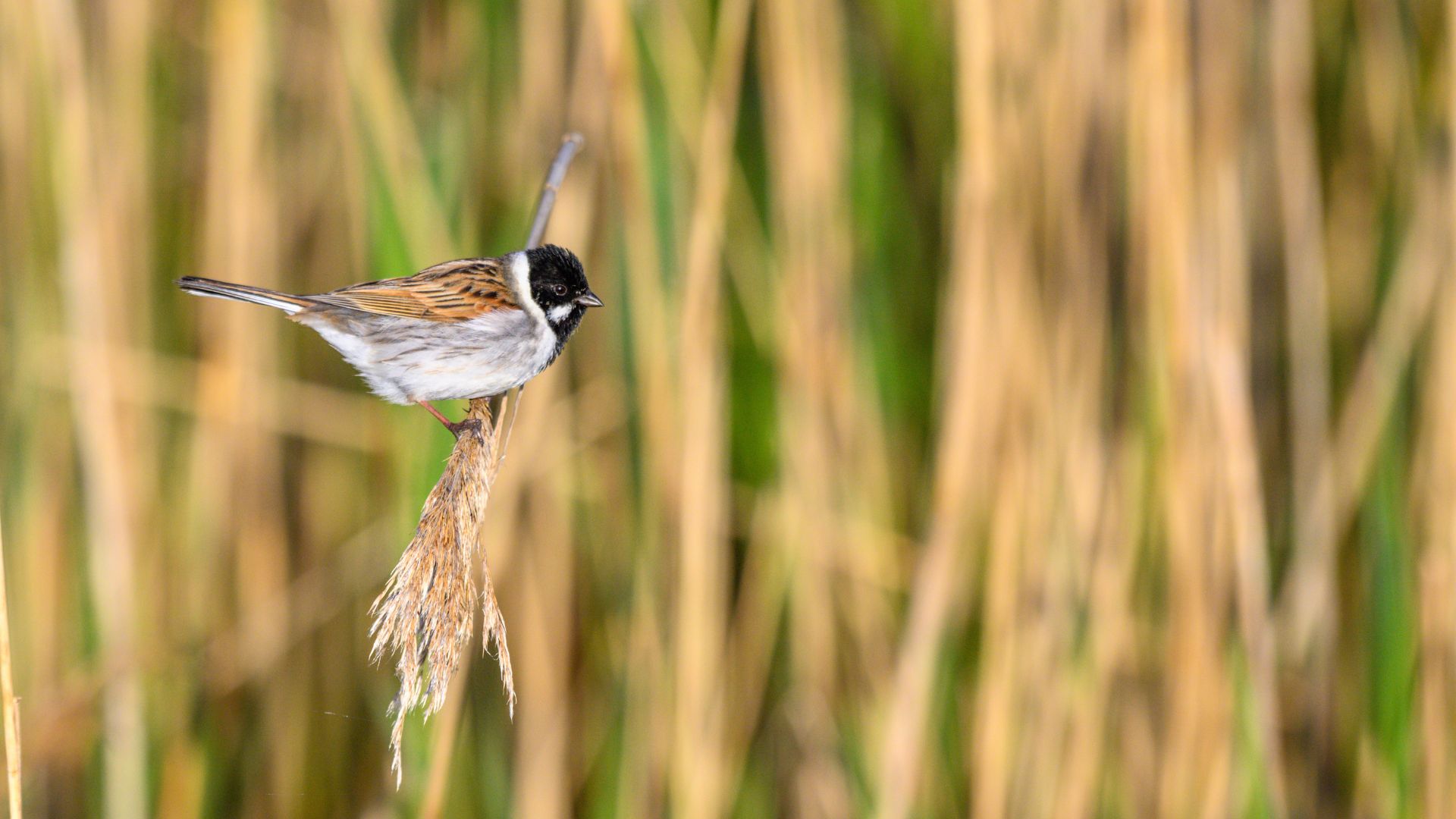
Spotted in North America, Reed Buntings tend to live in wetlands and farmland and they can be spotted in rural gardens away from busy towns and cities. Seeds are a staple in their diet, but they’ll also snack on plants in marshes and weeds. If you're hoping to have one of these small creatures visit your garden, they will feed from seed feeders, but they'd much prefer to eat on a ground tray or table.
31. American Crow
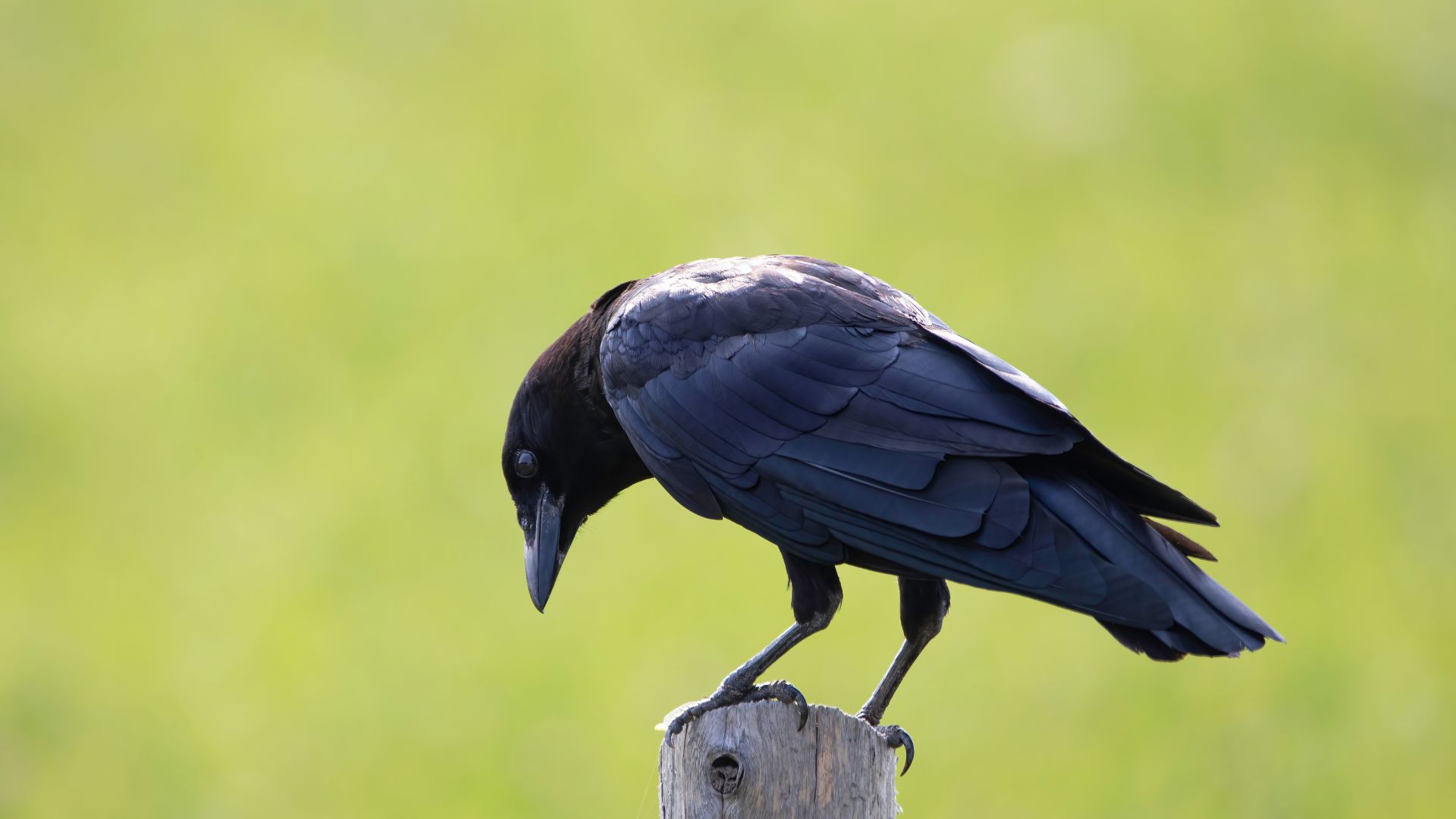
Smart, known for hiding their food and dropping nuts encased in shells on hard substrates in a bid to crack them open, the American Crow is one clever creature. You can find these black-flapping friends in open areas or near garbage dumps, gardens, or parking lots.
32. European Starling

Stocky in their appearance, these black birds are known for being noisy and aggressive. Normally infiltrating a lawn in large flocks, European Starlings will devour insects, like beetles and caterpillars as well as feasting on berries, fruits, and seeds.
Discover the brilliant birds tips that give some advice on all aspects of these majestic creatures. If you want to learn how to make bird suet, check out this vet's simple recipe. Or, learn if you should help a baby bird.

Becks is a freelance lifestyle journalist who has more than 9 years of experience in the world of digital and print journalism. She covers health, wellness and family interests for a range of titles. When she's not putting pen-to-paper (or finger-to-keyboard) she's reading, in the gym, or taking her Dog Aunt title very seriously looking after the handful of four-legged creatures in her life.
